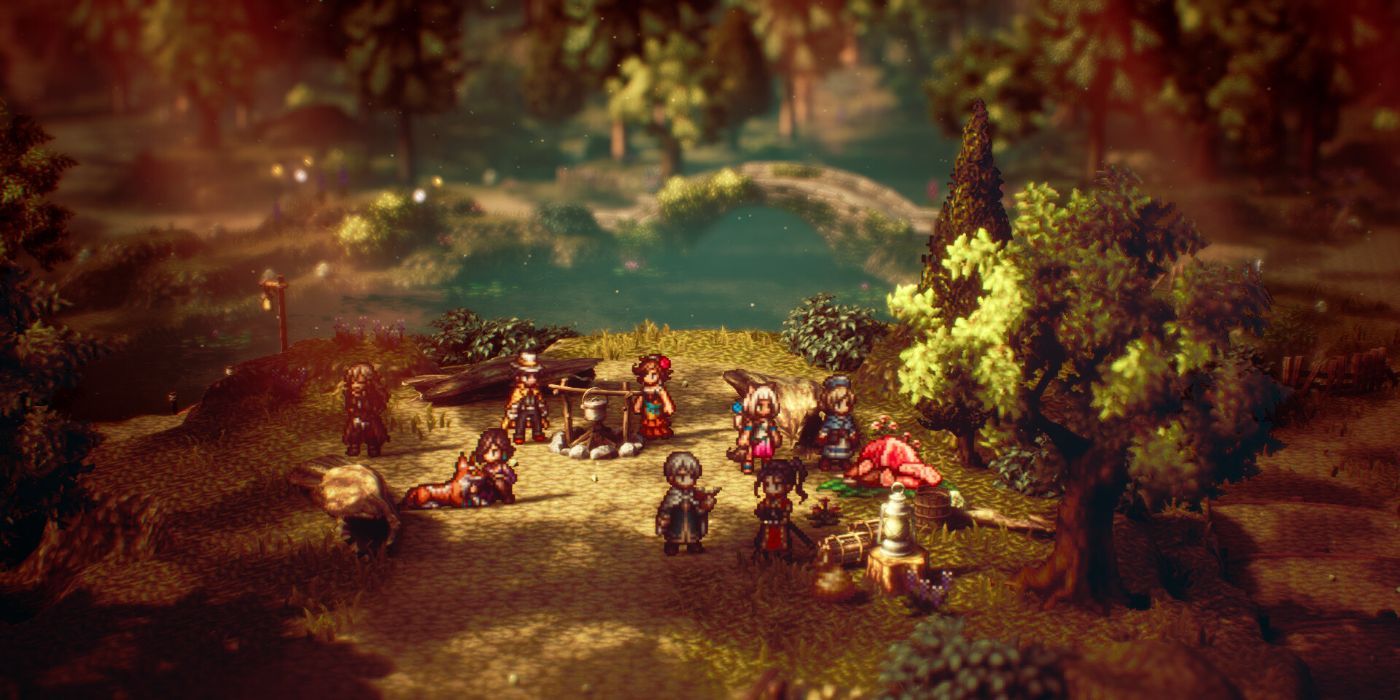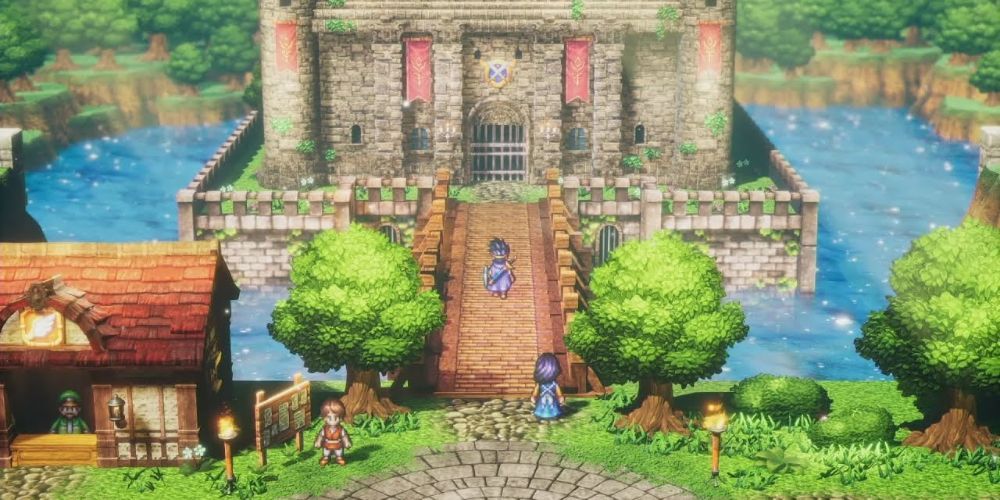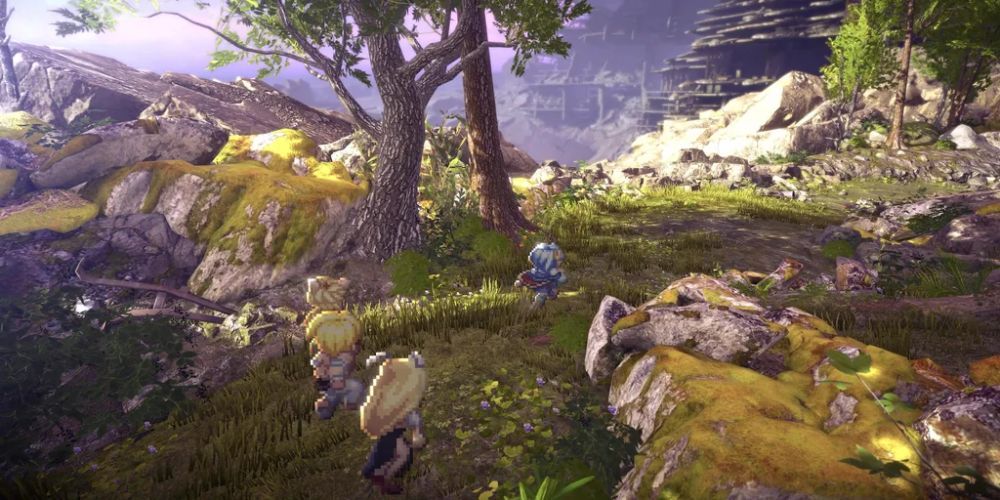With the creation of Octopath Traveler came HD-2D pixel art, a new graphical style that has now found its home in several remakes of older games. Dragon Quest III, Star Ocean: The Second Story R and the Suikoden remakes are a few examples of how the HD-2D style will be integrated into future releases. Is this a good thing, though? With the spread of the HD-2D style comes the homogenization of several unique styles, and considering how it’s being applied to remakes, that could spell the end of the original art direction for certain games.
Take Live A Live, whose remake added tons of particle effects to the character’s footsteps and the smoke that appeared when an enemy was defeated. Those effects might create something new for those looking to reexperience Live A Live, but they’re old news to gamers who have played Octopath Traveler. By spreading those particle effects across several different games, they stand the risk of blending original art styles with HD-2D "tropes."
2D and 3D on the PlayStation and DS
With all that said, HD-2D graphics definitely fill a niche that shouldn’t go away anytime soon. It’s unique, and the complex character animations that tend to go with it really bring the sprites to life. Octopath did well because of the minute details on each of the eight main characters that made them stand apart both from each other and from the rest of the genre. In Octopath Traveler II, this is driven even further. Consider Partitio’s running animation, where he holds his hat onto his head to keep it from blowing away, or Agnea’s, with the unique movements her skirt makes.
These tiny details drive home important aspects of their designs, and with the focus Octopath places on character development in the first place, its sprites are a perfect fit. The argument lies in whether an HD-2D remake of Suikoden loses something of its original art style. Moreover, does it lose the potential to develop in different ways by being shoehorned into the HD-2D style?
Mixing 2D sprites and 3D models is not a new concept. Two systems to examine to see these combinations flourish are the PS1 and the Nintendo DS. Consider Dragon Warrior VII and Xenogears with their revolutionary graphics for the time. On the DS, games like Pokémon Black and White or Sands of Destruction show that same complicated mixture of 2D and 3D. Sands of Destruction in particular does an excellent job of creating a unique art style within the technological limitations of the DS.
Indeed, it’s fair to argue that the original combinations of 2D and 3D were born out of technical limitations. It was easier and cheaper -- both in money and processing power -- to animate 2D sprites than it was to rig 3D models. This is the key to why 2D-HD seems so revolutionary -- developers have taken something associated with compromise and given it particle effects and complex animations. It shows the audience that pixel art can be beautiful and interesting rather than a simple necessity to keep the game running.
For fans of pixel art, this might seem a bit disingenuous; after all, simpler pixel art without all the effects can be just as effective or eye-catching. Sometimes simpler pixel art is a stylistic choice, like in Shovel Knight or The Messenger. Sometimes that simplicity is completely necessary. Imagine a world in which Undertale had HD-2D graphics. Would the story have been as effective, or would some of the emotional impact get lost in the dramatic lighting? Of course, there’s something all three of these games have in common: they’re indie titles. Official HD-2D releases have been, thus far, AAA games. At least for now, HD-2D games have shown big-name developers that fans are still interested in pixel art -- that gamers don’t need to see the pores on a character’s face to enjoy a game.
The Problem With HD-2D Artwork
The issue with HD-2D is that whether the game is Suikoden or Live A Live, the artistic direction begins to blend together. All HD-2D games look a bit like each other, and while that’s fine for Octopath and Triangle Strategy, which are intended to look alike, it’s a different story for retro games being brought to newer consoles. Say Pokémon Black and White are remade in 2D-HD -- should they look so similar to Dragon Quest III? In aiming for a similar art style, these franchises lose some of what makes them unique.
There’s an argument to be made that, once a game hits a certain level of popularity, its artistic direction -- no matter how clumsy, limited or difficult to look at -- becomes crucial to the game itself. For fans of the Game Boy Color version of Dragon Quest III, their fond memories of the game are associated with the limited GBC palette and screen size. This isn’t to say that progress should never be made when it comes to graphical improvement -- only that developers have the difficult task of deciding where a graphical style is completely outdated versus where it can be revived. It means that certain aspects of the original art direction will be sacrificed in order to adhere to the larger HD-2D style.
As remakes continue to be produced, the HD-2D style will hopefully become varied enough to support different art styles -- and it already seems like the Star Ocean remake is heading that way, particularly with its environments. The map in Octopath Traveler is fairly linear, and while this works for that game’s story, it’s nice to see that the developers of the Star Ocean remake have found a way to create a more open overworld in the HD-2D style.
So it seems, thankfully, that as remakes are being released, the HD-2D style will grow to encompass more varied worlds. Pixel art has never fully disappeared from any era of gaming, but as time progresses, it has fallen out of favor with AAA developers. Again, it’s been relegated to a "technological limitation" or "budget limitation" rather than a genuine artistic style. HD-2D graphics for larger titles have legitimized pixel art to some extent, hopefully paving the way for more pixel art in future projects.
The Future of Pixel Art in Gaming
Pixel art is no more outdated than traditional art is, and just because other methods exist to create games doesn’t mean pixel art should fall by the wayside. As is the case with many aspects of game development, now that gamers have convinced larger developers that pixel art is profitable, audiences stand the chance of seeing more of it.
Ultimately, the pros of HD-2D art outweigh the cons. A homogenized art style can be fixed, but pixel art needed to be repopularized for that to happen. With as many remakes coming as there are -- and with the Star Ocean remake as close as soon as November 2 of this year -- the artists working on these games have time to stretch themselves within the framework of the HD-2D art style and, hopefully, find a way to make it unique to themselves.






